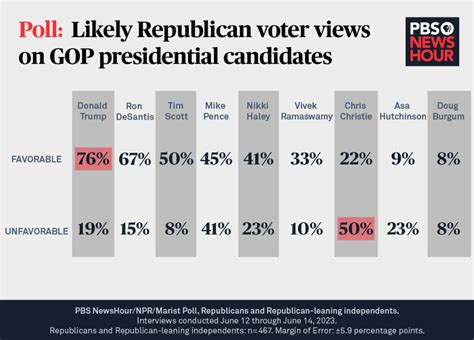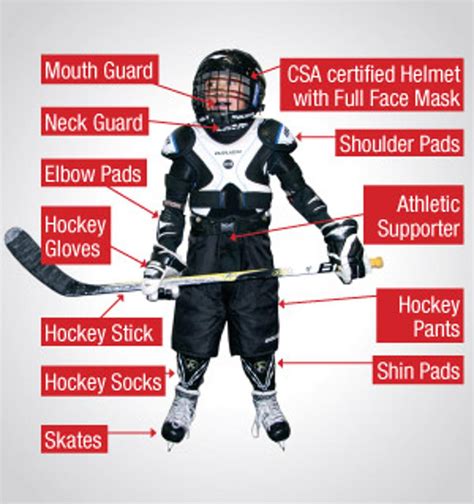Discover how technology, wearable devices, video analysis, and data analytics are transforming hockey training, enhancing player performance, safety, and game strategies.In the fast-paced world of hockey, technology is reshaping the landscape of player performance and team strategy. As athletes push their limits on the ice, innovative tools and techniques are playing a pivotal role in helping them achieve new heights. From wearable technology that tracks performance metrics to advanced video analysis that refines game tactics, the integration of tech is revolutionizing hockey training and competition. This comprehensive guide delves into how various technological advancements are enhancing player safety, optimizing performance, and providing teams with valuable insights for strategic development. Join us as we explore the remarkable synergy between technology and hockey, and discover how modern innovations are shaping the future of this beloved sport.
Understanding The Role Of Technology In Hockey Training
In recent years, technology has significantly reshaped the landscape of sports training, including hockey. Understanding the role of technology in hockey training provides athletes and coaches with the tools to enhance performance, refine techniques, and develop better strategies. With access to advanced technology, teams can analyze performance data in real time, allowing for immediate feedback and adjustments.
One prominent aspect is the integration of video analysis systems. Coaches can record training sessions or games and analyze players’ movements, positioning, and decision-making. This technology helps identify both strengths and areas for improvement, enabling coaches to tailor training sessions that meet the specific needs of individual players or the team as a whole.
Additionally, virtual reality (VR) training has emerged as a revolutionary tool in hockey. By immersing players in realistic scenarios, VR allows them to practice their skills and decision-making in a risk-free environment. Players can experience high-pressure game situations, enhancing their reaction times and game awareness without the physical strain of traditional practice.
Wearable technology is also crucial in monitoring player health and performance. Devices such as heart rate monitors and GPS trackers provide insights into players’ physical conditions, tracking metrics like speed, distance traveled, and heart rate variability. This data helps coaches manage training loads effectively, preventing injuries and ensuring players are in peak physical condition.
Understanding the role of technology in hockey training is pivotal for modern athletes. The use of video analysis, virtual reality, and wearable tech not only enhances performance but also fosters a culture of continuous improvement and innovation within the sport.
How Wearable Tech Improves Player Performance Metrics
Wearable technology has emerged as a game-changer in hockey, profoundly impacting the measurement and enhancement of player performance metrics. By integrating wearable devices such as fitness trackers, heart rate monitors, and GPS systems, coaches and players can gather real-time data that helps optimize training protocols and enhance overall gameplay.
One of the primary benefits of wearables is their ability to track various performance metrics, including:
| Metric | Description | Importance |
|---|---|---|
| Speed | Measures player’s movement speed on the ice | Helps in assessing acceleration and agility |
| Heart Rate | Monitors cardiovascular exertion during practices and games | Indicates fitness levels and helps manage training intensity |
| Distance Covered | Calculates total distance traveled during a game | Provides insights into endurance and pacing strategies |
| Zone Analysis | Tracks time spent in different areas of the rink | Informs positioning and tactical adjustments |
By leveraging this role of wearable tech, teams can analyze patterns in player performance, tailor conditioning programs, and reduce the risk of injury through more informed decision-making. For example, data collected can reveal overexertion or fatigue levels, allowing coaches to adjust training loads accordingly to ensure players remain at peak performance without succumbing to injury.
Furthermore, collaborative platforms that aggregate this data enhance communication between players and coaching staff. This ensures that players receive immediate feedback on their performance, leading to quicker adjustments and improved on-ice execution. With continued advancements in wearable technology, the potential for tracking and enhancing player performance metrics becomes increasingly sophisticated, thereby reinforcing the vital role of technology in modern hockey training and performance development.
The Role Of Video Analysis In Game Strategy Development
Video analysis has revolutionized the way teams approach game strategy in hockey. By utilizing advanced technology, coaches and athletes can break down the intricacies of gameplay with unprecedented detail. One of the most significant benefits of video analysis is its ability to provide a clear visual representation of player movements, positioning, and decision-making during practice and games.
The integration of video analysis allows teams to identify patterns and trends, both in their own performance and that of their opponents. Coaches can assess not only individual skills but also the overall effectiveness of team dynamics. For example, by reviewing game footage, coaches can pinpoint successful plays and strategies that lead to scoring opportunities, as well as missteps that require correction.
Further, the role of video analysis extends into pre-game preparation. Teams can analyze past performances against future opponents, studying their strategies to craft tailored game plans that capitalize on weaknesses. This adaptability is crucial in a fast-paced sport like hockey, where in-game adjustments can make all the difference.
The access to immediate feedback via video technology also enhances player development. Athletes can review their own performances in real-time, gaining insights that would be difficult to receive from verbal coaching alone. The visual feedback provides concrete examples that resonate better with players, facilitating a deeper understanding of strategic concepts.
Moreover, advancements in video analysis software allow for detailed breakdowns, such as tracking player movements and analyzing shot trajectories. These insights can lead to improved tactical understanding and inform in-game decisions, ultimately improving performance on the ice.
Video analysis plays a crucial role in enhancing game strategy development in hockey. By providing detailed insights into both individual and team performance, coaches and players can make data-driven decisions that are vital for success on the ice.
Innovations In Equipment: Enhancing Safety And Performance
Recent advancements in hockey equipment have greatly contributed to the role of technology in enhancing both player safety and performance on the ice. Manufacturers are focusing on integrating cutting-edge materials and designs that not only improve performance metrics but also prioritize player safety, which is crucial in a contact sport like hockey.
For instance, helmet technology has evolved significantly. Modern helmets are designed with multiple layers of protection, including advanced foams and impact-absorbing materials that decrease the chances of concussions. The incorporation of sensors into helmets is another innovative step, allowing for real-time data on impact forces, which can help coaches and medical staff assess players’ safety during games and practices.
In addition to helmets, protective pads for shoulders, elbows, and shins have been enhanced. These pads now utilize lighter materials that provide optimal protection without sacrificing mobility. The use of 3D printing in crafting custom-fit equipment has been a game-changer, allowing players to have gear that enhances their comfort and performance while minimizing injury risks.
Skates have also seen significant innovations, with blade technology evolving to improve grip and speed on the ice. Advanced materials and coatings are being used to create blades that are more durable and resistant to wear, ultimately enhancing the game’s pace.
Furthermore, stick design has not been overlooked. New stick technologies aim to optimize shot power and accuracy while maintaining a lightweight feel. The integration of technologies like smart sensors that provide feedback on shooting angles and stick handling is becoming commonplace, allowing players to refine their skills through data analysis.
Overall, the innovations in equipment play a vital role in shaping the future of hockey, enhancing both the safety and performance of players. As technology continues to advance, it is clear that the role of these innovations will be crucial in preparing players for the demands of modern hockey while ensuring they stay safe on the ice.
The Role Of Data Analytics In Performance Optimization
In the fast-paced world of hockey, data analytics has emerged as a powerful tool for optimizing player performance. By analyzing a vast array of data points, teams can gain insights that significantly improve their game strategy and individual player development. The role of data analytics extends from monitoring player fitness levels to refining tactical approaches during gameplay.
Teams leverage data collected from various sources, including wearable technology, video footage, and real-time game statistics. This data is then processed to identify patterns and trends that can help in making informed decisions. For example, understanding a player’s on-ice movement patterns can reveal areas for improvement in positioning and decision-making under pressure.
One of the key applications of data analytics is injury prevention. By tracking players’ physical exertion levels and fatigue, coaches can adjust training regimens to prevent injuries, ultimately enhancing player longevity and performance on the ice. Additionally, this data can inform load management strategies, ensuring that athletes are in peak condition for crucial games.
| Data Source | Analytics Application |
|---|---|
| Wearable Technologies | Monitoring physical exertion and biomechanics |
| Video Analysis | Evaluating player tactics and form |
| Game Statistics | Performance metrics and strategy analysis |
The role of data analytics in performance optimization is multifaceted. By integrating data-driven strategies into training and gameplay, teams can enhance both individual and collective performance, paving the way for greater success on the ice.
Frequently Asked Questions
How has technology changed the training methods for hockey players?
Technology has introduced advanced analytics, video analysis, and wearable devices, enabling players to track their performance metrics, analyze gameplay, and refine their techniques more efficiently.
What are some examples of wearable technology used in hockey?
Wearable technologies include GPS trackers, heart rate monitors, and specialized sensors that provide data on player movements, speed, and overall fitness during practices and games.
How does video analysis improve team performance in hockey?
Video analysis allows coaches and players to review gameplay, identify strengths and weaknesses in their strategies, and make informed decisions on tactics and player positioning.
What impact does data analytics have on player recruitment and development?
Data analytics provides teams with critical insights into player performance statistics, helping them make data-driven decisions during recruitment and facilitate targeted development programs.
Can technology assist in injury prevention for hockey players?
Yes, by using biomechanical analysis and monitoring workload through wearable tech, teams can identify potential injury risks and adjust training loads accordingly to prevent injuries.
How is virtual reality being utilized in hockey training?
Virtual reality is used to simulate game scenarios, allowing players to practice decision-making, develop their mental game, and improve situational awareness without physical strain.
What role do social media and streaming platforms play in enhancing hockey entertainment?
Social media and streaming platforms help engage fans by providing real-time game updates, highlights, behind-the-scenes content, and interactive experiences, thus enhancing the overall enjoyment of the sport.









